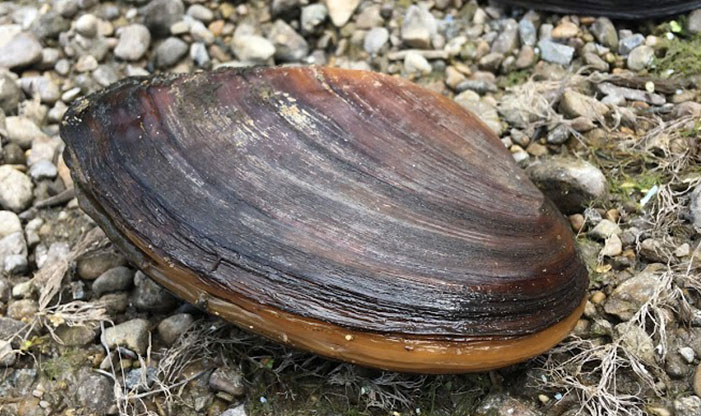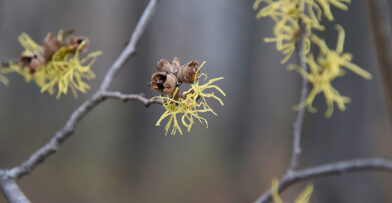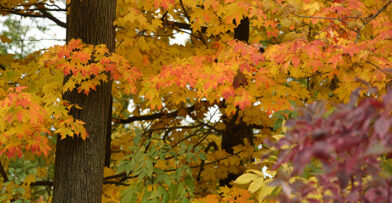Native freshwater mussels play an important role in healthy water ecosystems. Besides being a source of food for raccoons, muskrats, and weasels, the mussels provide habitat and food for creatures that live on the bottom of a body of water. While they eat, they filter the water of potentially dangerous bacteria. An adult mussel can filter upwards of 18 gallons of water per day. Unlike invasive filter feeders, native mussels are at equilibrium with their environments.
Similar to clams, mussels are bivalves with two thick symmetrical shells that grow as the mussel ages, with rings similar to trees. Mussels can reach ages past 60 years old, and spend their adult lives within the same one hundred yards of river, stream, or lake.
Mussel Monitoring
Recently, Schlitz Audubon participated in the first statewide survey for native mussels in over 40 years. This citizen science event was led Jesse Weinzinger and Lisie Kitchel, conservation biologists who run the WiDNR’s Wisconsin Mussel Monitoring Program, and aided by volunteers from both Schlitz Audubon and Milwaukee Riverkeeper. Eleven species of mussels were discovered living in the Milwaukee River along our Cleaver Property, including the elktoe mussel, a species of special concern and evidence of the ellipse mussel, a state-threatened species.
Native mussels are different from zebra and quagga Mussels, which are invasive. These invasive mussels over-filter water to remove too many nutrients, wreaking havoc on local ecosystems. They compete for food with native mussels. In order to better protect the native mussels in Wisconsin, it’s crucial to know more about all populations and diversity in Wisconsin rivers and streams.
A Diverse Species
Having a great diversity of mussel species has aided them in adapting to differing conditions. Out of the roughly 1000 mussel species on the planet, the greatest diversity is within North America, with 300 species. Wisconsin alone has 50 different species of freshwater mussel, and 18 of them have been found within the Milwaukee River. To put that in perspective, the entire continent of Europe has only 12 species of mussels.
Seventy-three percent of North America’s 300 species are considered rare, declining, or presumed extinct. Freshwater mussels have the highest percentage of species in peril, with crayfish, stoneflies, freshwater fish, and amphibians rounding up the top five, demonstrating how threatened our freshwater ecosystems are overall.
A Threatened Life Cycle
Most mussels live in the rock, gravel, or sand beneath flowing water. Part of the mussel’s body is buried under the sediment, with siphons facing upwards, allowing water and food particles to be carried over the opening in the shell for the mussel to filter. This makes them directly dependent on the substrate and water conditions around them.
Mussels are capable of withstanding harsh conditions temporarily, but long-term change in their environment will cause population decline. Water pollution of heavy metals and pesticides build up over time, and water flow alterations or sediment changes affect the habitat. Native freshwater mussels rely on a vertebrate host in order to reproduce (typically a species of fish). A decline in those host species leads to a decline in mussel populations.
When a female mussel reaches maturity after eight years, it releases between one and four million microscopic mussel larvae, called glochidia. These tiny mussels must attach onto the gills of the host species for an amount of time, until they are ready to detach and burrow into the sediment to grow into adults. The relationship is not parasitic, as these tiny organisms do not cause any increased mortality in the fish. But if the fish are not able to withstand the habitat, the mussels are not capable of moving to find them. This disrupts the entire life cycle of the mussel, causing rapid population decline. The mortality rate of glochidia is 99.99%, complicating matters.
With help from citizen scientists and dedicated volunteers, the future of Wisconsin native mussel species can improve, and they can continue to keep our waters clean and our river ecosystems healthy. Schlitz Audubon will continue to monitor mussels through our partnership with WiDNR.


